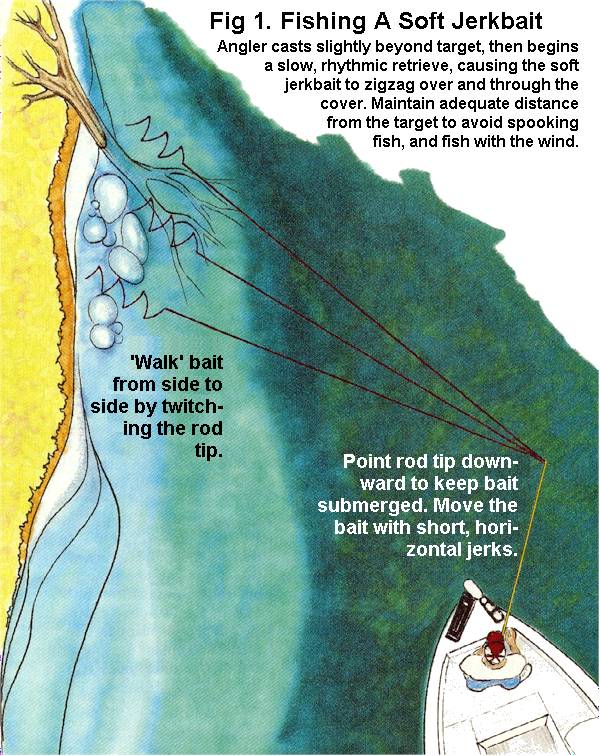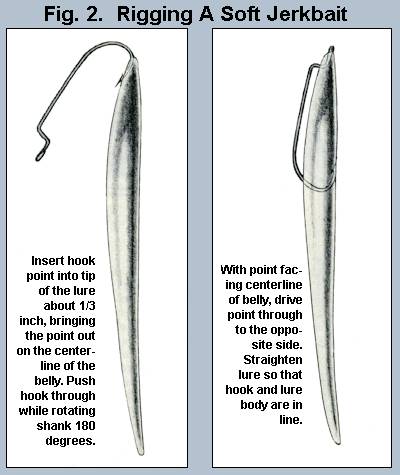 |
|
Written And Illustrated By BERNIE SCHULTZ
The 1992 B.A.S.S. Angler of the Year reveals his secrets for fishing soft jerkbaits...
It's the hottest new lure since the Gitzit, yet it's probably the simplest design ever molded into a soft plastic
bait. The original soft jerkbait was the Slug-Go, named for its soft and featureless slug-like shape.
Numerous versions are available from various manufacturers, but all share a
common feature: When fished
correctly, soft jerkbaits emulate a struggling baitfish better than any other lure.
|
WHEN AND WHERE TO JERK
"They're great tools for finding and catching
bass," VanDam says. "I can cover lots of water, locating both isolated fish as well as
large concentrations." Soft jerkbaits are also effective on heavily pressured fish. "I
have no problem fishing behind another angler, as long as he's not throwing the same bait.
That's a big plus in tournaments!" he says.
|
Just about anything that will hold fish is
right for soft jerkbaits: rock, wood, vegetation, or any combination
of these. Whatever the cover, depth and water-clarity will ultimately decide the effectiveness of the lure.
Water shallower than 10 feet with at least 3 feet of visibility is preferred. Although clearer water usually dictates lighter tackle, Van Dam chooses heavy equipment for casting distance and leverage on hooked fish. He recommends medium-heavy 6 1/2 to 7-foot trigger-style casting rods and reels spooled with 17- to 20-pound-test mono. When fishing deeper, he uses lighter line which permits |
 |
